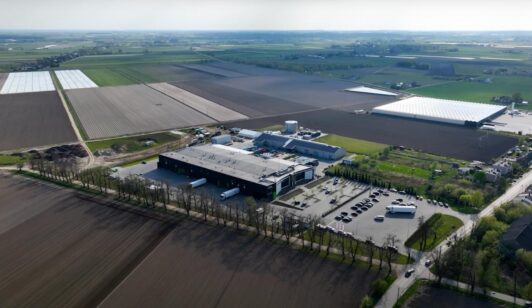
5 min
Proven Business Logic – project patterns for business processes

As a partner supporting our Customers in the area of business processes automation, we perfectly understand the dilemma of each enterprise facing: the choice of software for the implementation of the project of digitization and automation of business processes: use ready-made software available on the market or build a dedicated solution?
Of course – it depends 🙂. Both options provide a number of benefits, but also come with some drawbacks. What if we could combine the benefits of both options while minimizing their drawbacks?
There is also a third option that completely changes the terms of the dilemma described above: low-code software – that is, platforms for rapid and intuitive development of enterprise business applications that can be fully customized to a company’s unique needs. And this without the need to hire a large number of highly skilled experts or incur the high cost of developing and maintaining such software by a softwarehouse.
But is it the right choice for your organization?
In this article you will find out whether choosing a low-code platform is a good idea. We will also share our experience with using ready-made business process templates built in GoNextStage in your projects and tell you when such an approach is not the best solution and it is better to focus on building your application from scratch.
Advantages of using ready-made BPM applications (COTS) in your company
The most important advantages of ready-made applications realizing selected business processes, such as invoice approval flow, order flow, vacation requests flow, delegations or contracts lifecycle maangament, are for sure: fast availability and predictable price.
Many customers want to use proven applications that are already used by other companies or competitors. A popular solution is to choose the cloud model Software as a Service (SaaS), where we avoid having to incur separate IT infrastructure costs. This is definitely an advantage that will be appreciated especially by customers from the SMB sector. The SaaS model also has additional advantages: all updates of the software we use are made automatically and directly by the vendor. So theoretically we have nothing to worry about. Quite often we also encounter a situation in which our customers, so far using only ERP class system, purchase BPM (Business Process Management) solution from the ERP platform vendor. In the past, many ERP system vendors offered additional modules covering the BPM area, including OCR and DMS functionalities, guaranteeing full integration with the ERP system they already had. However, the reality was not so colorful and several such projects have already migrated to a dedicated BPM platform. What were the main reasons for such decisions? I invite you to the next paragraph of the article, in which we will take a closer look at the disadvantages and limitations of ready-made BPM applications.
Time for changes, or when ready-made BPM applications may not meet the needs of your organization
As the company’s business grows, its business processes also change. The company hires new employees, the organizational structure grows dynamically. New company branches are opened, more and more data and documents are collected by users. The company implements new procedures and tries to control internal processes. This can be one of the scenarios when ready BPM applications, which have been used in your company so far, are no longer sufficient. And relying on a shared network drive for file sharing and email correspondence will no longer work effectively. If you need to adapt your current processes to changing business needs or integrate your current applications with other IT systems, the matter becomes seriously complicated. This may be the moment when it is worth to seriously consider a “change” from off-the-shelf applications to low-code solutions, more flexible, which can be quickly adapted to the changing business environment of the company, which will provide easier opportunities to integrate with other IT platforms and, above all, combine all business processes into one ecosystem, giving a fuller view of the matter (360 Business View).
One of the significant limitations of ready-made applications is the fact that they will certainly not meet all the business expectations set before them. So you will have to make some compromises and adapt to the software you use. Changes and customizations may turn out to be costly or completely impossible to implement. It happens that methods and possibilities of integration are also limited. On top of that there are issues of scalability and performance – with a dynamically growing organization these may not be sufficient.
What are the Proven Business Logic Applications?
While advising many Customers, we observe this problem from different perspectives: choosing “boxed” solutions or investing in a low-code platform and building them ourselves? Or maybe outsourcing the development of such an application to a software house?
Based on our experience and know-how gained in numerous projects carried out by GoNextStage consultants in the field of optimal implementation of a given process in an organization, we have created Proven Business Logic Applications. It consists of several dozen ready-made processes tested in production conditions at our Customers. These processes form the design patterns – Proven Business Logic (PBL), which are the starting point for further projects and implementations.
Thus, PBL processes are a set of best practices for a given application: they respond to substantive business needs and expectations, contain the essence of the process in the form of a universal schema – the process template. Business rules and forms in the process are designed to meet the expectations of the most demanding users. Due to the fact that everything is based on a low-code platform, it is easy to adjust it to the needs of a new Customer during implementation. The method of conducting the implementation project using PBL allows for conducting FIT&GAP analysis in relation to the ready process template, ensuring quick adaptation and launching Go-Live.
How to successfully carry out a project using Proven Business Logic Application? Methodology of project implementation
Projects using Proven Business Logic are carried out using the DSDM (Dynamic System Development Method) methodology. We work out the solid basics concerning the requirements for the application together with the customer at the analysis stage and iteratively create the application at the Design&Develop stage. Then we go through the UAT (User Acceptance Test) phase and production start-up (Go-Live).
During analytical workshops we use PBL (Proven Business Logic) process templates, which are later adapted to the Client’s requirements during the Design&Develop phase. The Design&Develop phase uses the Scrum development methodology, with periodic meetings of the project group consisting of GoNextStage consultants and the Client’s representatives. During the meetings the effects of work and completed tasks from the jointly defined project backlog are presented, and further sprints of the project are planned.
Examples of Proven Business Logic GoNextStage ready applications
We have already carried out many projects in the manner described in the previous paragraphs. They were characterized by fast and efficient implementation, resembling in its duration the implementation of a ready-made “box application”. A definite benefit, appreciated by the client, was the possibility of immediate adjustment (already at the Design&Develop stage) of the application to the client’s requirements, obtained during the analysis workshops.
If you would like to see a list of our ready-made PBL applications, you can find it below 👇
Authors:



